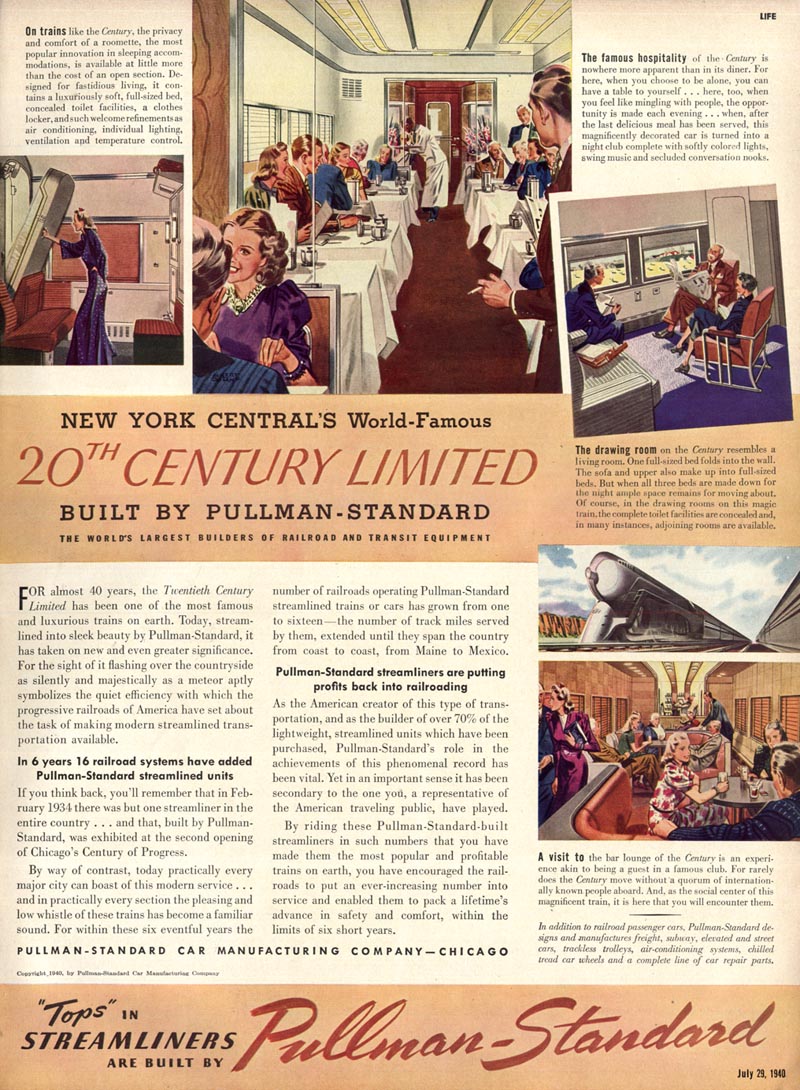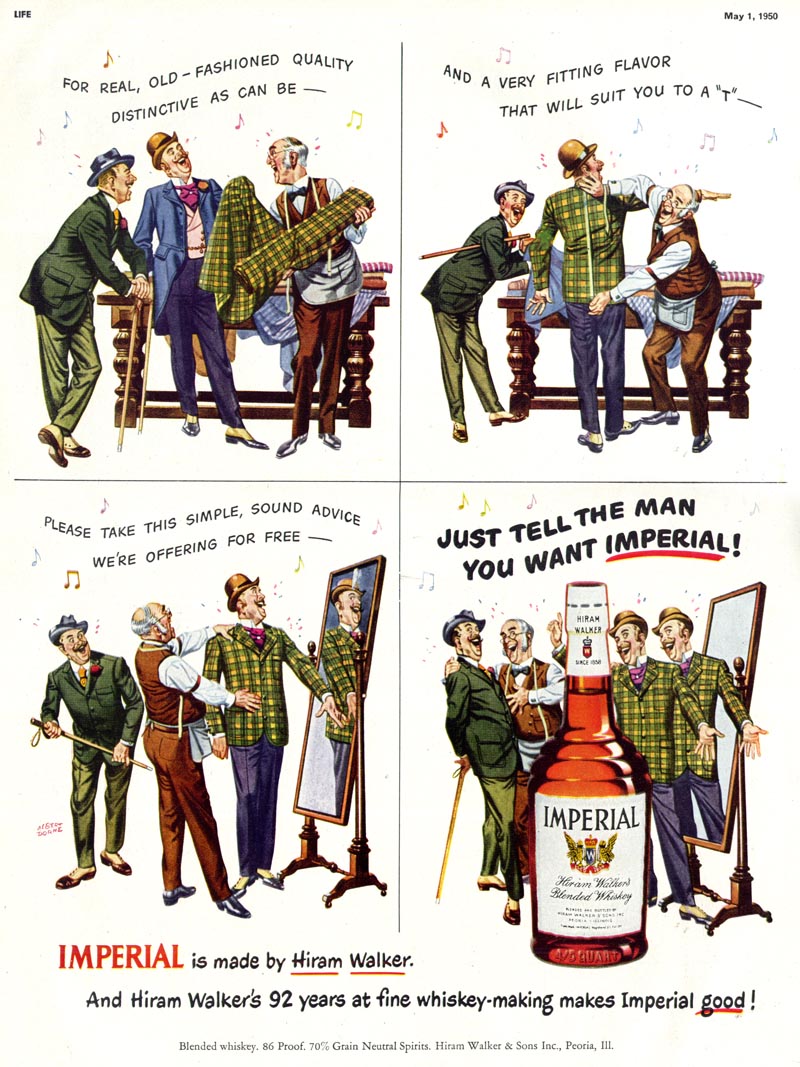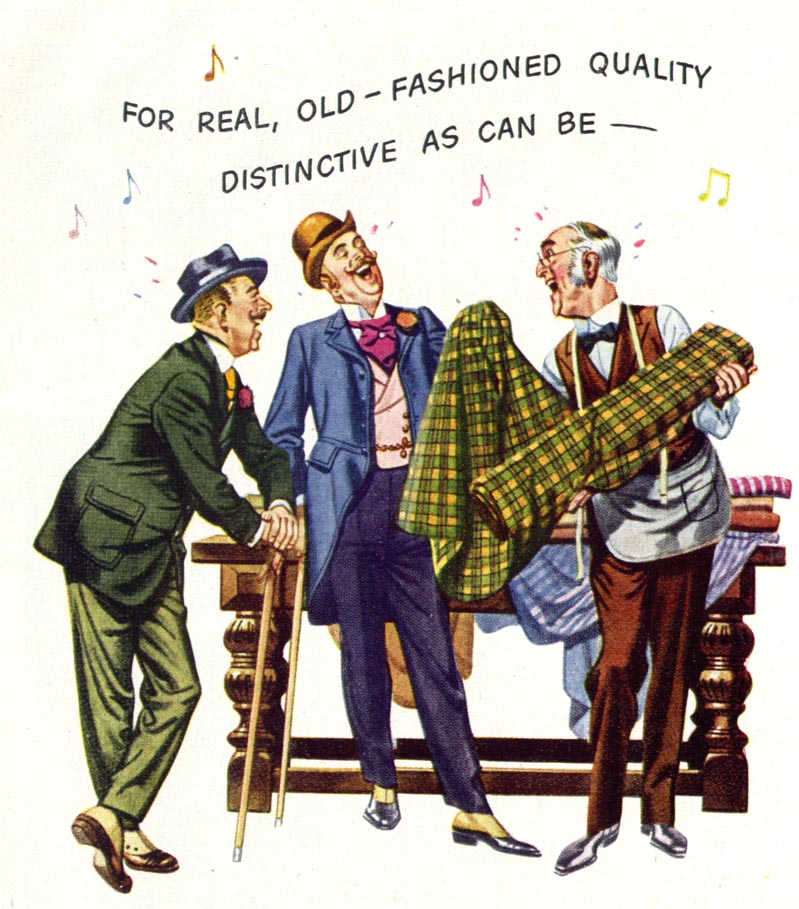To justify itself and the money paid for it, advertising art must be primarily an extension of the copy idea.

This doesn't mean that you as the artist cannot assert your own thoughts, nor must you be a spineless technician who sacrifices all his beliefs in a blind effort to please the advertiser or publisher who pays the bills. Many an artist has made a better picture by refusing to bow completely to the whim or command of a client and many more will do so through the years.

On the other hand, if I seem to be polishing an apple for the art director, don't get me wrong. While most art directors in the business today are extremely able, there are entirely too many who have spoiled a lot of potentially good pictures because of too much "master-minding" of the artist.
When you go into the business of commercial art you do so of your own choice. In making that choice you elect to make certain compromises:

(1) finish someone else's ideas; (2) work for art directors or buyers; (3) please a great number of people, some who understand art, most who don't; (4) do hurry-up work; (5) become part of an effort to sell merchandise successfully and convey information to the public and influence his thinking and choice of products.

If you want to be a "fine" artist - that is, an easel artist - and work for your own amazement - that's fine if you can afford it. Someone will enjoy your pictures, even if it's only yourself.

But if you want to make money, someone - and I mean the one who pays -

- must get more out of your picture that merely the esthetic pleasure provided by your efforts.

To be a successful commercial artist or illustrator you must please millions of people.

* My Albert Dorne Flickr set.
* Thanks to Brian Postman for contributing the Famous Artists magazine cover scan!
"This doesn't mean that you as the artist cannot assert your own thoughts, nor must you be a spineless technician who sacrifices all his beliefs in a blind effort to please the advertiser or publisher who pays the bills. Many an artist has made a better picture by refusing to bow completely to the whim or command of a client and many more will do so through the years."
ReplyDeleteGlad to say this line of reasoning reads much better.
Mindlessly following directions is limiting. The commercial illustrator can have a good idea too. Better to suggest than to regret not having opened one's mouth.
Most good Art Directors have a lot of experience and it is most likely that they know what will work best for a given job.Same goes for a top notch illustrator.
Hey Leif! I lifted the concept/design of that busy train car illo from that "City of Miami" ad when I was hired almost a decade ago to do a CD cover for a band called "Missing Link". The cover art opened up to a three panel illo. Of course NOW I'm discovering the genius behind that great art was Al Dorne who I've been a huge fan of since coming upon your Flickr collection a few years back.
ReplyDeleteHere's the cover (looks like chicken scratch compared to Al's work):
http://www.lestoil.net/art/linkcove.jpg
great artwork!
ReplyDeletethe current illustrative ad artwork out there is not like this any more... and I kinda miss it.
LOVE that FAS cover! That is, for me, Dorne doing what he did best.In fact I've seldom seen a full color job by AD that had as much impact as one of these eloquent minimal color line illustrations.
ReplyDeleteGood stuff. Although it seems obvious the reason i.e., not requiring any analysis, I wish someone would do an article about the apparent happiness of figures in advertisements. Of course, the makers of the ads would never have people that frown or look despondent, or even just expressionless, but as works of art, not as potential consumers, the depictions of the world(s)being presented are typically quite enobling and free from any problematic human condition. When the ads were designed to sell goods, nobody noticed the "world" presented as anything positive, as that is the conscious goal of the sponsor/artist, but for us, viewing years later, it is a pervasive and pleasurable quality when viewing commerical art as simple "art." If you look at it out of context, it is invariably happy art. One might say: Thanks for the Cheer!
ReplyDelete*whew!* so many excellent comments on this topic - thank you everyone! I am moving my replies to comments in the Monday posting forward to this posting to keep things current.
ReplyDeleteNisachar; Thanks for your complimentary words about the blog - and for your well-reasoned p.o.v. on the topic. I think we're actually all on the same page about the role of the illustrator in business... having read further down through the comments and my replies - and having read the second excerpt of Dorne's article you probably realize I deliberately "poked the bear" to get a strong reader reaction.
Still, I'm curious to hear what you think about the nature of the client(AD)/illustrator relationship... is one or the other "the boss" or do you imagine it to be a 50-50 partnership?
Dorne makes a point of giving credit to "most good art directors", as you do - but what about the many bad ones? What if you happen to be working for a dolt? And do you agree that there are some self-important illustrators out there ( some of whom are quite high profile, others not so much ) who don't give a rat's ass about what the client needs from them because they won't tolerate anybody interfering with their "personal vision"?
So far only Black Pete, with his comment in Monday's post, has confirmed this reality... and only from the perspective of the editor/writer relationship - but if it happens in the world of wordsmithing, we all know its must be happening in the world of picture making, right?
Les;
ReplyDeleteWow, that is very, very cool! Thanks for sharing that with us -- if Al Dorne were alive today, I suspect he would have been very pleased by your "homage". :^)
Charlie; No egg on your - or anybody else's - face, my friend. Your comments and perspective are very much respected, appreciated and entirely valid. All points of view are welcome and only add to the depth and breadth of the discussion. Please always feel welcome to share your experience and opinions with us.
ReplyDeleteI've said many times that its pointless to try to argue who's the best illustrator, cartoonist, designer, AD, fine artist, etc... art is simply too subjective!
But in the specific case of Albert Dorne, I say I admire him the most not because I believe he was the best illustrator or cartoonist in terms of technical skill (although I still contend that his skills were magnificent) but because of the entire package and his resulting accomplishments. In your last comment you kind of brushed that aside with your remark, "And, no criticism of a good business head and art abilities combined. Wow...there have been artists out there making tons of dollars whose work almost makes me ill. The large eyed waifs with tears by the Keanes back in the 50's....the kitsch (sp?) lighted cottages by Kincaid. Very successful artist/business people. But let's get real..."
But Charlie, that actually is my point this week. For a tiny percentage of successful illustrators (and I include you very much among them) natural talent has played a key role in a successful, rewarding career. But for the vast majority of us with only a modicum of natural talent (and I suspect you would include Albert Dorne in that much, much larger group) a key role for success must be greater attention to our business skills. If we follow your line of reasoning about Dorne being only mediocre in his artistic abilities, how else to explain his unprecedented success? Luck?
* Now before all the illustrators with an abundance of God given talent get all huffy ( "Whattaya mean? I worked hard to get where I am!" ) Yes, I appreciate you also worked hard - but please don't deny that some people have more talent than others and that it gives those people an advantage in the world. Beauty, athletic ability, analytical skills, dexterity - some people are born with an extra dollop and the world rewards them for it.
My point is that I admire Dorne's success ( and why shouldn't I? Why shouldn't we all? ) and would like to see it repeated for myself and as many other illustrators as possible, including the students I'll be teaching. If we can all learn from Albert Dorne what most illustrators ( then and now ) are usually most lacking in ( business acumen ), then I say it deserves our rapt attention!
As David Apatoff pointed out so succinctly in one of his comments, there's nothing wrong with being a "businessman/artist" - but most of us seem to have an almost pathological aversion to the notion that that's exactly what we are - and want instead to focus exclusively on being recognized for our wonderful picture making abilities.
That lopsided attitude has lead as much to the decline of the profession since 1960 as has any technological advancement we typically like to blame.
Ironically, you're more likely to find original Big Eye art in 'cool' galleries commanding big prices than competent but characterless work from that era.You may see some Sundblom or Fawcett but it still isn't being recognised as bona fide Art.Go figure.
ReplyDelete